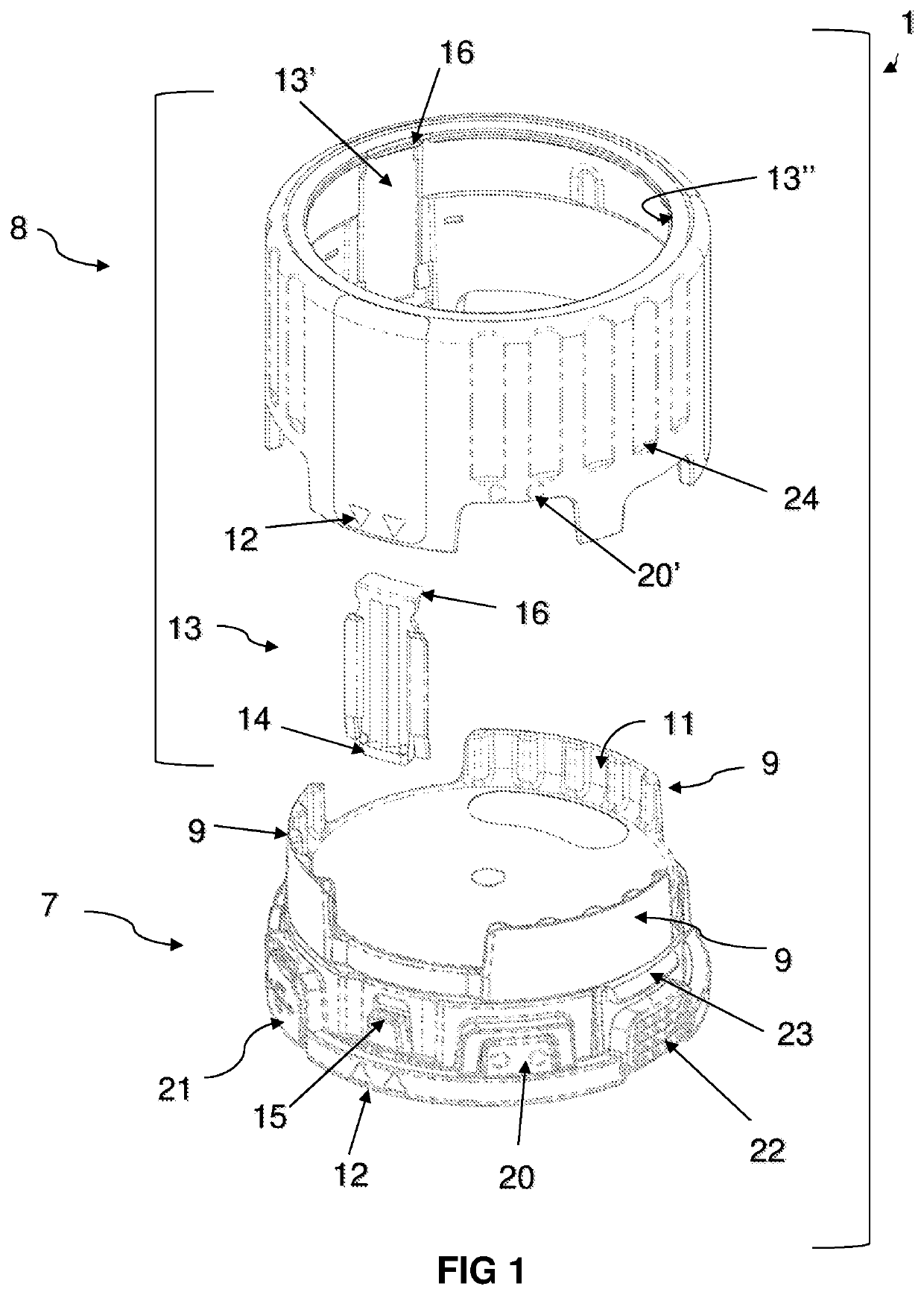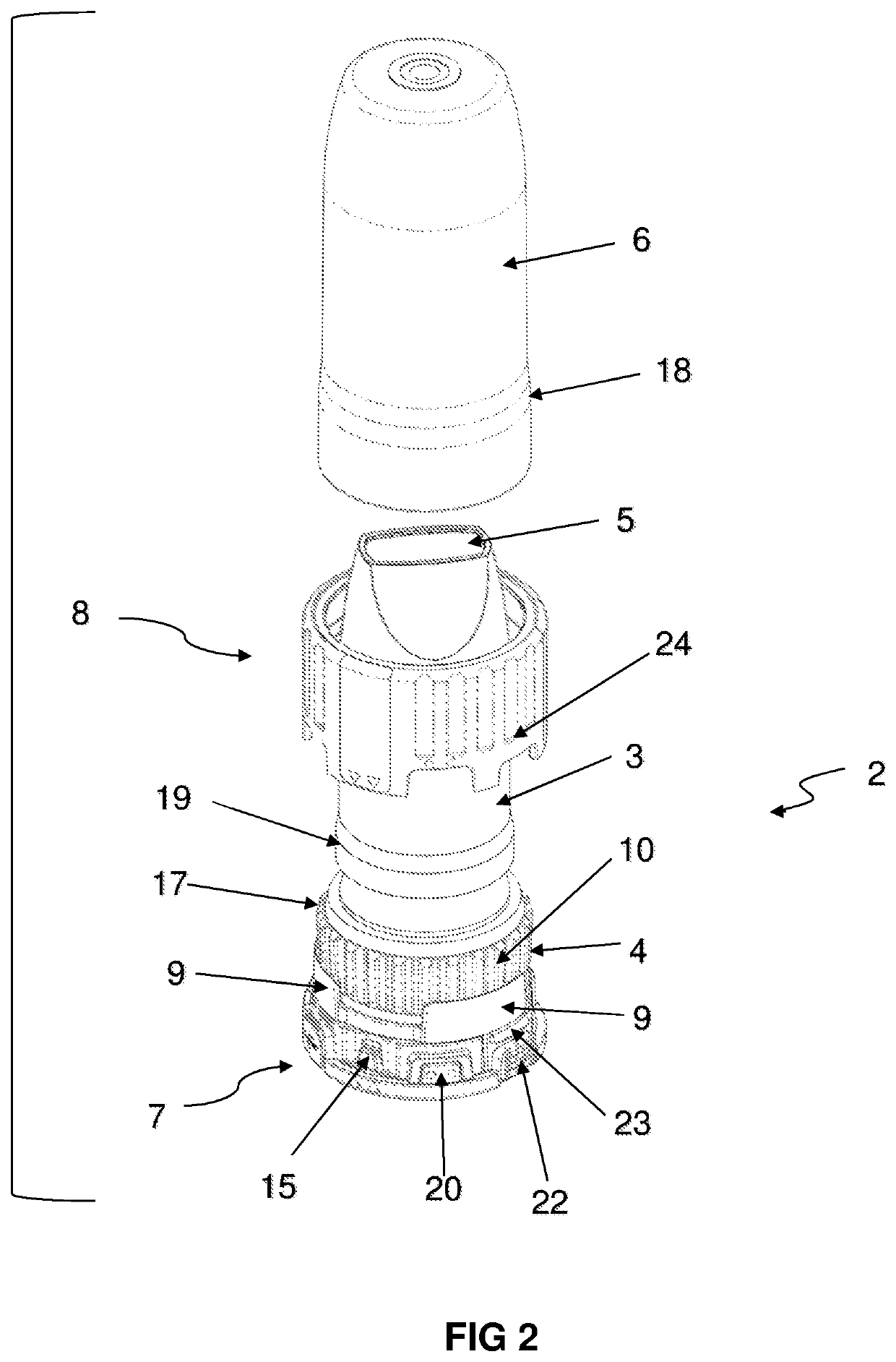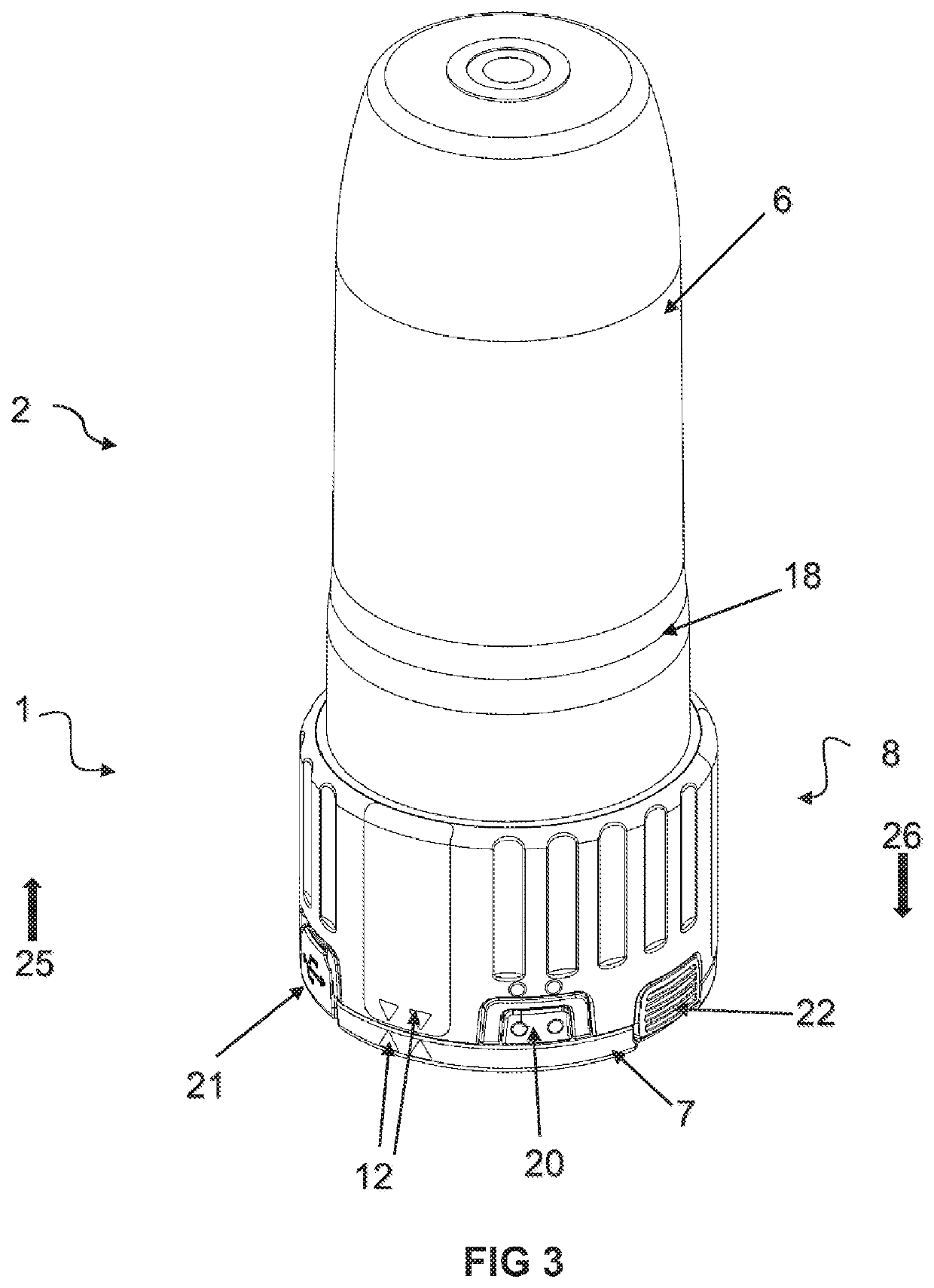Compliance monitor for a dry powder medicament delivery device
a technology of a compliance monitor and a delivery device, which is applied in the direction of medical devices, inhalators, other medical devices, etc., can solve the problems of poor medicament compliance, reduced disease control, and reduced quality of li
- Summary
- Abstract
- Description
- Claims
- Application Information
AI Technical Summary
Benefits of technology
Problems solved by technology
Method used
Image
Examples
Embodiment Construction
[0126]The description of a preferred form of the invention to be provided herein, with reference to the accompanying drawings, is given purely by way of example and is not to be taken in any way as limiting the scope or extent of the invention.
DRAWINGS
[0127]FIG. 1: is an exploded view of one possible embodiment of a compliance monitor for monitoring patient usage of a dry powder medicament delivery device,
[0128]FIG. 2: is a partially exploded view of the embodiment illustrated in FIG. 1, showing how the compliance monitor is fitted to the medicament delivery device,
[0129]FIG. 3: is a view of the embodiment illustrated in FIG. 2, with a cap fitted to the medicament delivery device,
[0130]FIG. 4: is a cross-sectional side view of one embodiment of the compliance monitor, when fitted to the medicament delivery device (but with the cap removed), as illustrated in FIG. 3,
[0131]FIG. 5A: is an inverted exploded view of one embodiment of the compliance monitor, showing angled views of each c...
PUM
 Login to View More
Login to View More Abstract
Description
Claims
Application Information
 Login to View More
Login to View More - R&D
- Intellectual Property
- Life Sciences
- Materials
- Tech Scout
- Unparalleled Data Quality
- Higher Quality Content
- 60% Fewer Hallucinations
Browse by: Latest US Patents, China's latest patents, Technical Efficacy Thesaurus, Application Domain, Technology Topic, Popular Technical Reports.
© 2025 PatSnap. All rights reserved.Legal|Privacy policy|Modern Slavery Act Transparency Statement|Sitemap|About US| Contact US: help@patsnap.com



